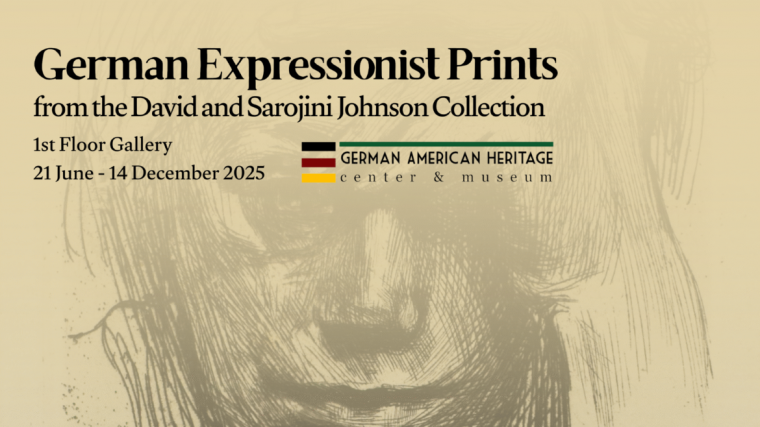
“German Expressionist Prints from the David & Sarojini Johnson Collection" at the German American Heritage Center -- through December 14.
Through Sunday, December 14
German American Heritage Center, 712 West Second Street, Davenport IA
Amassed over four decades by a pair of noted printmakers and educators, the fascinating works found in German Expressionist Prints from the David & Sarojini Johnson Collection will be on display in Davenport's German American Heritage Center through December 14, this showcase of arresting pieces held in conjunction with the Figge Art Museum's companion exhibit Fever Dreams: German Expressionism.
The remarkable German Expressionist Prints collection includes an impressive selection of pieces by German talents, its selection of works a celebration of well-known and impactful artists from one of the most tumultuous eras in recent history. This exhibition emphasizes the contributions of German Expressionists with examples of art condemned by the Nazis as degenerate (Entartete Kunst) and the legacy of printmaking around the world. With prints from artists such as Käthe Kollwitz, Max Beckmann, Lea Grundig, and more, visitors can explore the techniques, rich stories, and intense emotions that were woven into the cultural fabric of Europe in the early 20th century.
In 1905, a group of four German artists, led by Ernst Ludwig Kirchner, formed Die Brücke (the Bridge) in the city of Dresden. This was arguably the founding organization for the German Expressionist movement, though they did not use the word itself. A few years later, in 1911, a like-minded group of young artists formed Der Blaue Reiter (The Blue Rider) in Munich. The name came from Wassily Kandinsky's Der Blaue Reiter painting of 1903. Among their members were Kandinsky, Franz Marc, Paul Klee, and August Macke. However, the term Expressionism did not firmly establish itself until 1913.
Expressionism has been notoriously difficult to define, in part because, as historian and author Richard Murphy stated, "The search for an all-inclusive definition is problematic to the extent that the most challenging expressionists such as Kafka, Gottfried Benn and Döblin were simultaneously the most vociferous 'anti-expressionists." What can be said, however, is that it was a movement that developed in the early 20th century, mainly in Germany, in reaction to the dehumanizing effect of industrialization and the growth of cities, and that, as Murphy said, "One of the central means by which expressionism identifies itself as an avant-garde movement, and by which it marks its distance to traditions and the cultural institution as a whole, is through its relationship to realism and the dominant conventions of representation."
German Expressionist Prints from the David & Sarojini Johnson Collection will be on display at the German American Heritage Center through December 14, with regular venue hours Tuesdays through Saturdays from 10 a.m. to 4 p.m. and Sundays from noon to 4 p.m. Exhibit entrance is free with $3-5 museum admission, and more information is available by calling (563)322-8844 and visiting GAHC.org.










